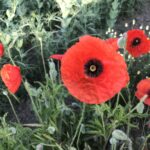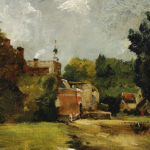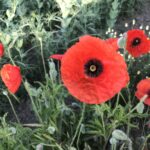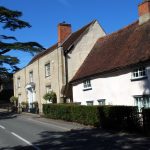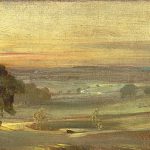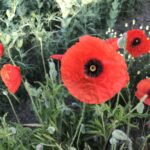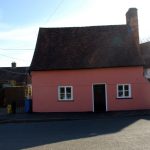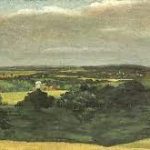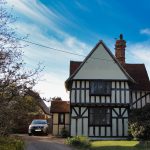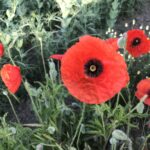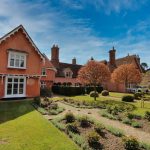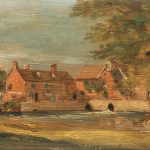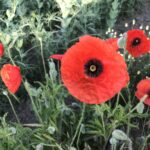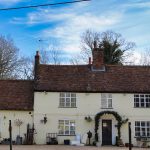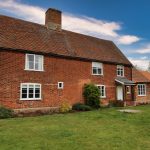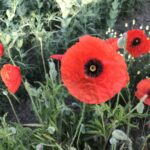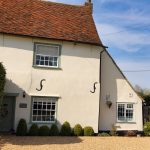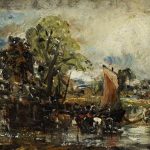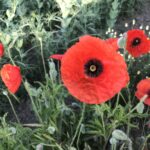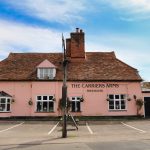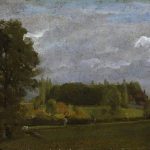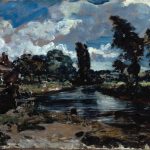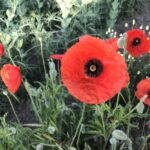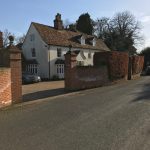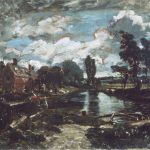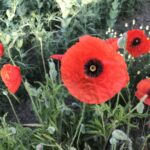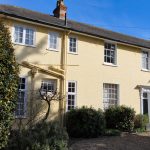Brother of Geoffrey Wood and Robert Wood. A career soldier, Richard was sent to France in September 1914. Awarded the Military Cross in 1916, at the time of his death Richard was the Commanding Officer of the 2nd Battalion of the York and Lancaster Regiment.
Explore Mark's extensive research on East Bergholt's war heroes in our 'War Stories' section. Read below to learn about his background and ongoing dedication to preserving their memories.
This oil study looking at the church from the direction of the village green, barely 100 yards from his birthplace, East Bergholt House.
Brother of Geoffrey Wood and Richard Wood. Robert volunteered to join the Army in September 1914. He served with the Border Regiment at Gallipoli and later on the Western Front, until his death whilst leading a Trench Raid.
Valley of the Stour at sunset, 31 October 1812. This oil sketch, and its partner Autumnal sunset, are two of a small group of sunsets Constable painted in 1812.
Alfred emigrated to Canada some years before the War. In 1916, he volunteered to join the Canadian Expeditionary Force and later served on the Western Front with the Canadian Field Artillery.
A view over the Stour Valley to Brantham, showing the weatherboard mill owned by Golding Constable.
William is the only man to be commemorated on both the Brantham and the East Bergholt War Memorials to those who Died. He served with the East Yorkshire Regiment on the Western Front and was wounded during the Battle of the Somme.
Constable's compositions were clearly dictated by what he saw in front of him, using symmetrical compositions and scenes that focused on manmade buildings such as this, his father Golding Constable's Mill at Flatford.
William volunteered to join the Essex Regiment in early September 1914. He served for ten months with their 9th Battalion on the Western Front, until his death during the Battle of the Somme.
This painting was originally known as ‘Highgate’ but is actually another view of East Bergholt Rectory, home of Dr Rhudde, grandfather of Constable's beloved Maria Bicknell.
Serving in the Royal Horse Artillery, John was a part of the British Expeditionary Force in 1940 and was one of those evacuated out of Dunkirk. He later fought in the North African campaign, until his death in Libya in January 1943.
Barge being drawn by horses out of a dry dock.
Cousin of Richard Burbury. A pre-war career Army Officer, Hilaro never lived in East Bergholt - he is commemorated on the War Memorial because his parents lived in the village. Hilaro was transferred to the Airborne Forces in 1942 and was killed in action during the Battle of Arnhem. At the time of his death he was the Deputy Commander of the 1st Airlanding Brigade.
A view of East Bergholt, the village in which Constable grew up.
Flatford Mill was owned at the time by Golding Constable, John's father, a wealthy corn merchant.
Herman served as a Wireless Operator/ Air Gunner with 408 (Royal Canadian Air Force) Squadron - part of Bomber Command. He was killed when his aircraft – a Handley Page Hampden - was shot down over the North Sea, with the loss of all the crew.
The picture depicts Flatford Mill which belonged to John Constable's father, Golding Constable.
Cousin of Hilaro Barlow. A pre-war career Army Officer, Richard never lived in East Bergholt - he is commemorated on the War Memorial because his aunt and uncle lived in the village. He was killed on D-Day, leading his Battalion on Sword Beach.

